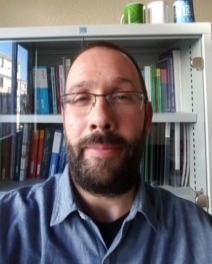Program Information
Application of RayStretch in Clinical Cases: A Calculation for Heterogeneity Corrections in LDR Permanent I-125 Prostate Brachytherapy
F Hueso-Gonzalez1 , J Vijande2*, F Ballester3 , J Perez-Calatayud4 , F Siebert5 , (1) Helmholtz-Zentrum Dresden-Rossendorf, Institute of Radiooncology, Dresden ,(2) University of Valencia, Burjassot and IFIC (CSIC-UV) ,(3) University of Valencia, Burjassot, ,(4) Hospital Clinica Benidorm, Benidorm, and Hospital Universitari i Politecnic La Fe, Valencia, ,(5) Clinic of Radiotherapy (Radiooncology), Kiel,
Presentations
SU-G-201-2 (Sunday, July 31, 2016) 4:00 PM - 6:00 PM Room: 201
Purpose: Tissue heterogeneities and calcifications have significant impact on the dosimetry of low energy brachytherapy (BT). RayStretch is an analytical algorithm developed in our institution to incorporate heterogeneity corrections in LDR prostate brachytherapy. The aim of this work is to study its application in clinical cases by comparing its predictions with the results obtained with TG-43 and Monte Carlo (MC) simulations.
Methods: A clinical implant (71 I-125 seeds, 15 needles) from a real patient was considered. On this patient, different volumes with calcifications were considered. Its properties were evaluated in three ways by i) the Treatment planning system (TPS) (TG-43), ii) a MC study using the Penelope2009 code, and iii) RayStretch. To analyse the performance of RayStretch, calcifications located in the prostate lobules covering 11% of the total prostate volume and larger calcifications located in the lobules and underneath the urethra for a total occupied volume of 30% were considered. Three mass densities (1.05, 1.20, and 1.35 g/cm3) were explored for the calcifications. Therefore, 6 different scenarios ranging from small low density calcifications to large high density ones have been discussed.
Results: DVH and D90 results given by RayStretch agree within 1% with the full MC simulations. Although no effort has been done to improve RayStretch numerical performance, its present implementation is able to evaluate a clinical implant in a few seconds to the same level of accuracy as a detailed MC calculation.
Conclusion: RayStretch is a robust method for heterogeneity corrections in prostate BT supported on TG-43 data. Its compatibility with commercial TPSs and its high calculation speed makes it feasible for use in clinical settings for improving treatment quality. It will allow in a second phase of this project, its use during intraoperative ultrasound planning.
Funding Support, Disclosures, and Conflict of Interest: This study was partly supported by a fellowship grant from the Spanish Ministry of Education, by the Generalitat Valenciana under Project PROMETEOII/2013/010, by the Spanish Govern- ment under Project No. FIS2013-42156 and by the European Commission within the Seventh Framework Program through ENTERVISION (grant agreement number 264552).
Contact Email:

